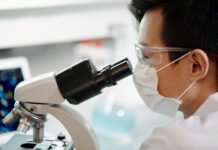Geochemist Barbara Sherwood Lollar studies everything about water under the surface of our planet. When it comes to near-subsurface water, that might include issues of purity and quality of our drinking water. But on the other end of the spectrum, she looks for evidence of life kilometers underground in hopes of finding life on other planets and moons.
“We look at systems way, way deep into the Earth, even two and three kilometers deep, where we’re looking at the way in which other forms of life, and in particular naturally occurring microorganisms, are living in the waters deep within this planet,” says Sherwood Lollar, university professor of Earth sciences at the University of Toronto.
These microorganisms thrive in some of the harshest environments on the planet. They tell us about the incredible extremes where life can still be found. In our quest to find life elsewhere in the solar system, these insights serve as a launching point for exploration.
“We look inwards to understand if something is out there,” adds Sherwood Lollar. “The field of astrobiology right now is in an extraordinary phase.”
There is unprecedented understanding of our solar system and our universe. We have a wealth of information from the Rover explorations of Mars. We are continually finding and characterizing more exoplanets circling other suns, some of which have evidence of water, a requirement for life.
With more planet and moons to study, the opportunity to find life is expanding. Understanding the physical and chemical signatures that indicate life, past or present, improves our chances of recognizing it.
“We are at a real sweet spot in terms of this question of space exploration, and a very, very exciting time to be living in.”








































